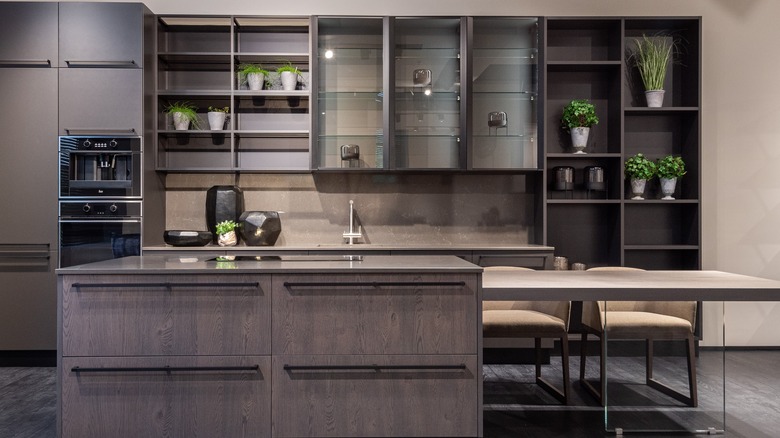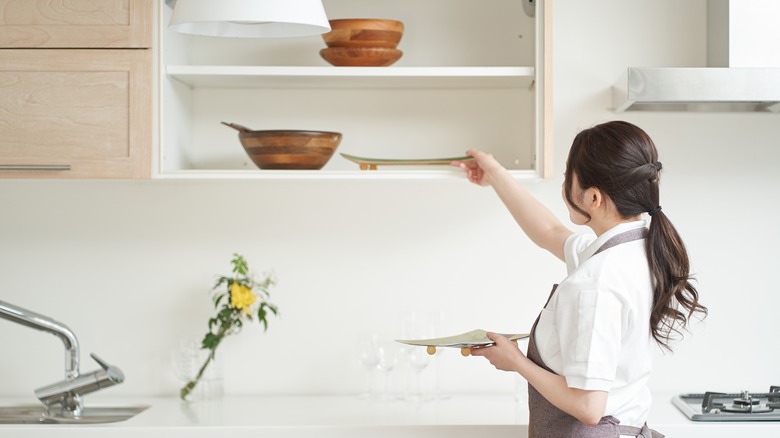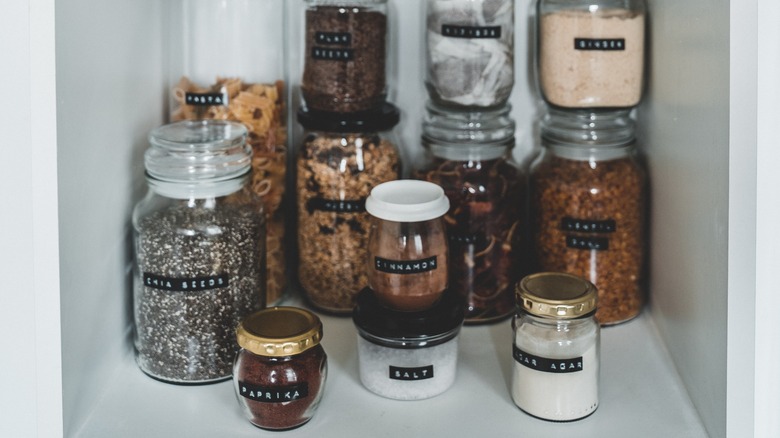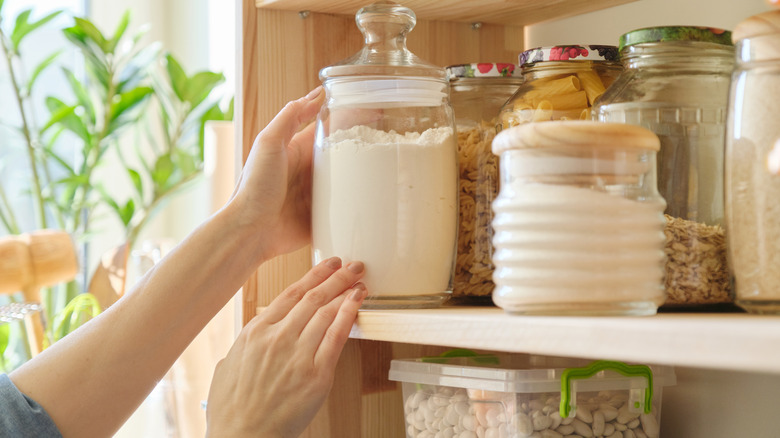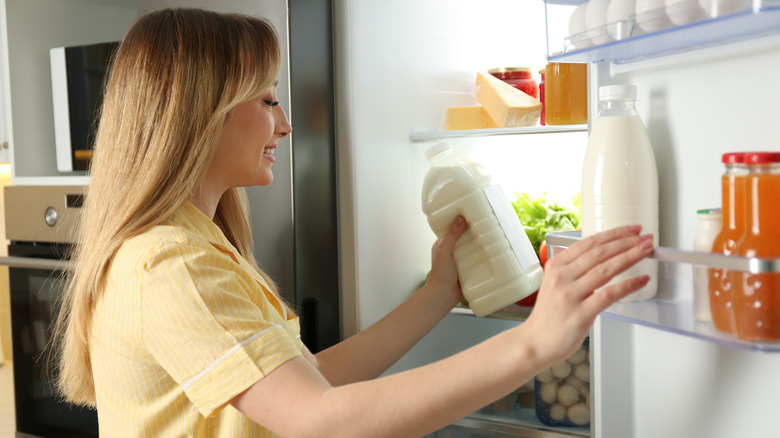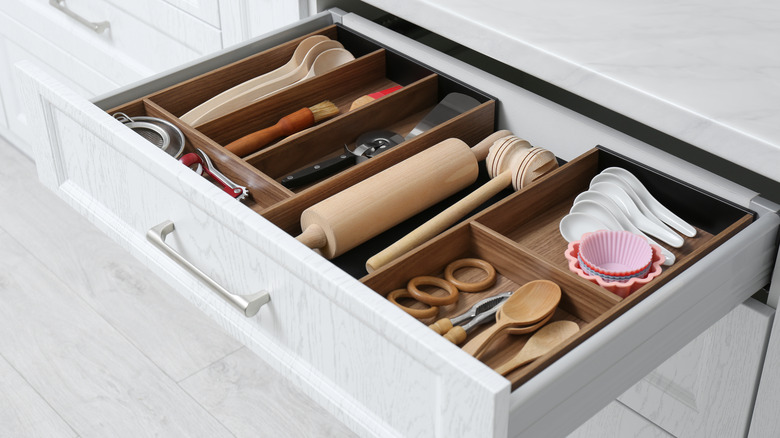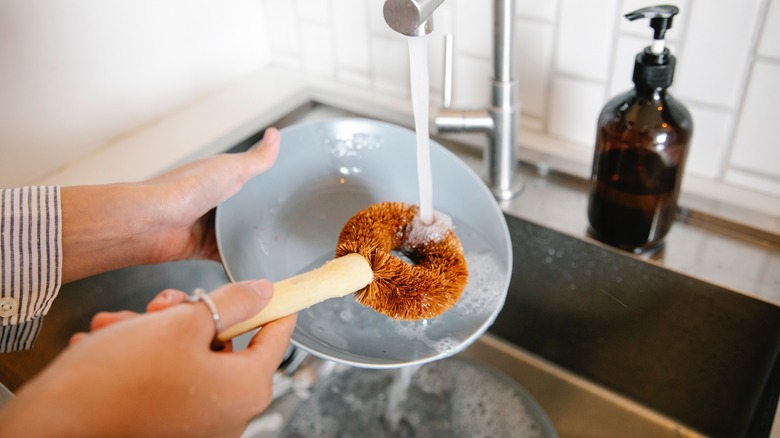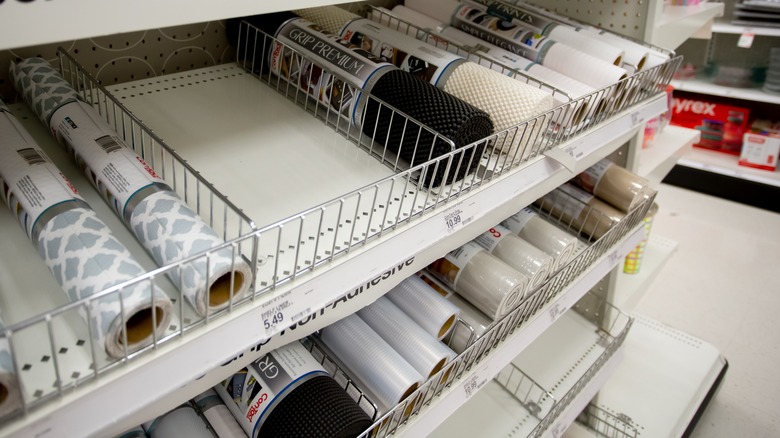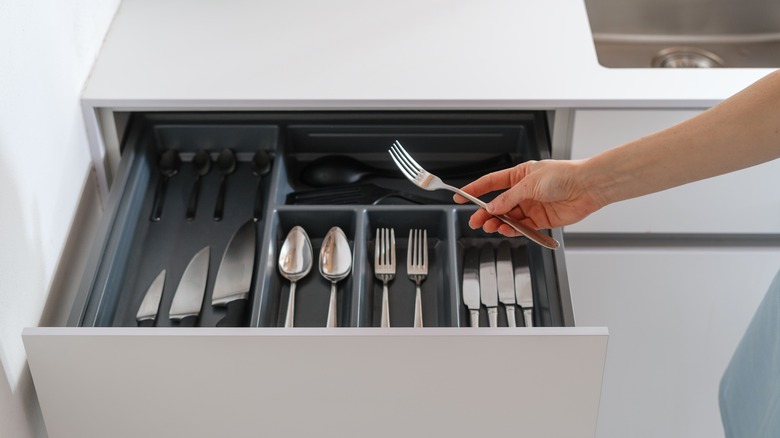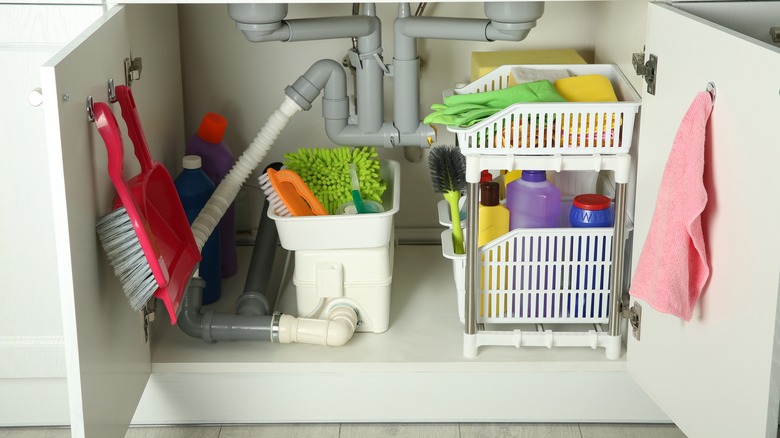Mistakes To Avoid When Reorganizing Your Kitchen
Reorganizing any room in your home takes careful deliberation to ensure your finished design is both practical and aesthetically pleasing. Being thoughtful with your layout ensures the room won't backslide into becoming a mess again. This is especially important to keep in mind when reorganizing your kitchen. Since your kitchen is one of the most high-traffic locations in your home, it takes ongoing diligence to keep this space tidy and orderly.
Several parts of your kitchen require careful organization, including the pantry, refrigerator, freezer, and cabinets. Larger kitchens may even have additional refrigeration or storage spaces. The best way to start re-structuring it is to sort it into five major zones: cooking, provisions, washing, preparation, and storage. These are the five zones in a professional restaurant, and memorizing these sections creates a good structure for organizing personal kitchens, too.
But mistakes are bound to happen when you're pruning your inventory, shuffling items to different cabinets, and buying new organizational tools. Maybe you put your most-used items in an inconvenient cabinet, or decant your food but forget to add labels. Perhaps you invest in pretty but inefficient organizers, or don't store your food in the proper conditions. Making these mistakes will create more work for you since you'll have to go back and fix them. To avoid that, here are some of the most common mistakes people make when reorganizing their kitchens.
Not considering practicality when placing items
One of the biggest mistakes people make when reorganizing their pantry, refrigerator, cabinets, and other kitchen spaces is not considering how often they use items before arranging them in storage. Even if it looks better aesthetically, you should never place items or ingredients you rarely use at the front of your cabinet. They'll simply get in the way, and you'll move them aside to reach the things you use more often.
If you want to be especially savvy about where you place items, you should follow the same protocol many business stockrooms use for storing things. Place commonly used items at the front, and arrange them in a way that doesn't require you to move stuff around every time you reach for something. For example, try using lazy Susans to organize spices and bottles, or incorporate mini storage shelves in the cabinets to use up empty space. You can also layer packages from smallest to largest, with the larger items in the back, so you aren't hiding anything from view. You should also attempt to place the items you use most often at accessible heights. Otherwise, you'll be repetitively crouching down or grabbing a step stool for daily tasks.
Not labeling your shelves or items
The hardest part about reorganizing a kitchen is maintaining your hard work long-term. This is especially difficult if you share your home with family or roommates, as it may be difficult for them to follow your newfound organization method. The best way to keep yourself and your housemates on track is to label the majority of your kitchen.
You should place labels on shelves and food packaging alike, informing people of what's inside and what belongs in certain locations. You can also use tags to indicate items' opening and expiration dates, and encourage other household members to do the same. This ensures the freshness and quality of your kitchen's contents in the future. If you plan on labeling items, drawers, and shelving in your refrigerator and freezer, make sure you use freezer-grade waterproof labels. These label strips are made of thermal paper with top coats that keep them from peeling off and fading in cold and moist conditions. Just make sure you purchase the correct size strip for your label maker — these machines come in various sizes and have different functionalities depending on the model you purchase. Certain devices allow for customized fonts, colors, and sizes, while other label makers are less flexible in their capabilities.
Not properly sealing opened products and ingredients
When reorganizing your shelves or pantry, you should prioritize checking that all food products are properly sealed before putting them back in place. Over weeks of using your pantry and refrigerator daily, there's a high chance that you or someone in your household didn't seal something properly out of laziness or by mistake. The most common items to be left partially open are items without resealable labels, such as cereal bags, baking ingredients, and generic brand snacks. You may think loosely rolling up a partially eaten bag of chips will keep it fresh, but according to the University of Idaho, these items need to be tightly folded.
There are multiple methods for ensuring your food stays fresh. You can invest in food storage containers, such as dishwasher-safe sealed jars and plastic bins. Many convenience and grocery stores also sell wooden or plastic clips for pinning bags shut. If you want to be extra diligent about keeping your food sealed, you can invest in a vacuum sealer, a specialized tool that uses heat to meld packaging as though it was never opened.
Putting food items in the wrong spot
A second important consideration when rearranging the food in your kitchen is to ensure all the items are in their correct location. Double-check that some of your pantry products shouldn't be stored in the fridge instead. You may be surprised which products actually need to be refrigerated. To ensure that doesn't happen, create a grouping system for pantry items. Have separate bins or baskets for things like grains, sauces, snacks, root vegetables, and baking goods. Every item will have its proper place, ensuring you or someone in your house doesn't absently put cheese or something perishable in the pantry. After all, if there is no "cheese" bin, they will know it shouldn't go there.
In turn, you should also keep an eye out for instructions informing you to use a product within one to two weeks of opening. Keep those items grouped in a separate bin at the front of your pantry, reminding you to use them before their expiration dates.
Keeping items you don't use
Storing food has been the primary discussion up to this point, but what about the tools, equipment, and utensils you keep stored in your kitchen? Chances are you have duplicates of some items or specialized tools you never use. It's common for people to own multiple can openers, sets of measuring cups, whisks, and other kitchenware.
It's indeed convenient to have some extra cookware, especially if you prepare food regularly and your favorite tools are often in the dishwasher waiting to be cleaned. However, you should take a moment to contemplate whether you need spares for all your kitchen tools. Consider which ones you do need several of and which ones you could do without. This can remove substantial clutter from your kitchen, making it easier to organize your drawers and find the tools you prefer to use anyway.
In addition to your duplicates, you should also sort through your specialized tools. It's common for specialized tools to hit the market when certain foods are trending. For example, do you own an avocado slicer but hardly eat avocados? This tool is not a necessity, and you can still slice avocados without it. Since tools like avocado slicers are only made for one purpose, you may want to consider removing them to reduce clutter. Some people struggle to throw away these types of items, thinking, "What if I need it one day?" If you have a large niche kitchenware collection, consider putting all these items in a bin stored in your closet or pantry. Over the next year, you can see whether you go into this bin to retrieve these objects for kitchen tasks. If it remains untouched for a long period, it may be easier to rationalize getting rid of these items.
Keeping broken or ineffective equipment
Over years of repetitive use, it's normal for kitchen equipment to deteriorate and become ineffective. Before you start organizing your items and putting them back in their respective cabinets and drawers, do a quick test to see how well they work. Electrical equipment is easy to test— plug it in and power it on. This also provides the opportunity to ensure you have all the necessary pieces for operating certain appliances. If you discover you're missing any essential pieces, such as the blade to your blender, you can either order the missing piece from the manufacturer or consider investing in an entirely new product.
You should also examine your utensils and tools for rusty or broken-down pieces. Corrosion and sharp edges can pose both a safety and a health risk, and you should replace or thoroughly clean these tools before storing them again. The U.S. Department of Agriculture warns that rust is not considered a "food-safe" material and should be removed entirely from items that touch your food. You can remove the rust using distilled white vinegar, baking soda, dishwasher soap, and a scrubbing sponge to ensure your organized kitchen not only appears pristine but is thoroughly clean and sanitary.
Not separating seasonal items
Anyone who enjoys baking and cooking will likely have a collection of seasonal bakeware made special for the holidays. These unique cookie cutters, ornamental mixing bowls, color-themed sprinkles, and other goods are usually only used for a few weeks to a month out of the entire year. The rest of the time, they are simply sitting in your drawers and cabinets, taking up space.
To reduce clutter during the months when holidays are not in session, store these items with other seasonal collections rather than your daily kitchen items. Stow your uniquely shaped cookie cutters, napkin rings, placemats, and silverware with their respective holiday, be it Halloween, Thanksgiving, or Christmas. Remember to label the bins so these accessories are easier to find when the time comes. You can also jot down on the boxes some of the items found inside if you're worried you'll forget where you stored them.
Skipping the shelf liner
The kitchen is home to substances of varying compositions; liquids, powders, and more. Even when you're careful with your storing habits, it's still possible to knock items over and spill their contents on your shelves, cabinets, and countertops. Laying shelf liners is a great method for protecting all inside and outside surfaces in your kitchen.
Shelf and drawer liners come in all sizes, and specialized versions are made specifically for your refrigerator and freezer. These features both protect your shelves from spills and make clean-up easier. They're easily removable and replaceable when ruined, taking the brunt of a spill for your wooden cabinets or glass shelving by soaking up most of the mess. These liners also serve an organizational benefit — the texture of the liner clings to objects and keeps them from sliding around and moving. This helps items stay in their designated spots in your drawers and keeps lighter objects from toppling over. They typically come in large rolls of patterned, clear, or solid-colored material, which can be cut to fit any cabinet or shelf properly.
Arranging drawers without inserts
One of the greater inventions of modern society is organizational inserts for cabinets and drawers. These are dividers that sort storage space into sections to keep items more organized and easy to find. Although a simple invention, this amenity is necessary to keep your kitchen organized and your things in their proper place.
You can buy specialized inserts for cutlery, spices, bakeware, cookware, knives, pots and pans, and any other kitchen collections you can imagine. They come in various sizes and styles for cabinets and drawers alike. Most cutlery and silverware inserts are made of wood or plastic and can be adjusted to fit in shallow, roll-out drawers. Pot and pan organizers are much larger, and use wood or metal dividers to separate your pans on a vertical stand. This makes it easy to browse your collection and find the right size tool for the job at hand. If you really want to optimize your kitchen layout, you can DIY custom inserts. It'll require some basic woodworking, but you can build inserts using plywood, wood glue, nails, a saw, and paint (via Charleston Crafted). If that DIY project is beyond your skillset, you can also buy small plastic trays from general merchandise retailers for a more basic approach to organization.
Forgetting to fill vertical space
It's easy to fill your shallow drawers to the brim with kitchenware, but homeowners are often guilty of having excess empty space in their cabinets. Don't forget that you don't only have to store items horizontally; you can also fill the unoccupied vertical space. Unused cabinet space is a common problem, especially in kitchens with tall cabinets. Since this is a common predicament, there are several methods for utilizing that empty space using stackable shelf inserts and standing pot and pan organizers previously discussed.
Stackable shelves aren't just useful for your cabinets; you can also utilize these in your pantry. There are designs made for wire, wooden, or other shelving types, so you are not limited by the current installation in your kitchen area. You can also look at shelving units you can hang on the back of your pantry door or the side of your fridge if you're really hurting for room.
Placing appliances on your countertop instead of in cabinets
One of the biggest interior design trends to arise in 2022 was open shelving in kitchens. This kitchen design puts dishware and appliances on display instead of hiding them behind cabinets and drawers. Despise the popularity of this trend, you should still be selective in what items you have openly displayed in your kitchen to maintain organization.
Having too many appliances on your countertops creates a mess of wires, and unless you purchased all of your machines from the same collection, they likely wouldn't aesthetically complement each other. Keep the appliances you regularly use — such as your coffee maker or toaster — on your countertop, but stow away the ones you don't use daily. Niche products, such as your waffle maker or panini presser, may impress your houseguests, but keeping too many items like this on your counter will make your kitchen look messy. Storing them in cabinets will also encourage you and your housemates to clean these items after every use since people are less likely to stow away a dirty appliance. This has its own array of benefits, as it removes residual cooking odors and makes devices easier to clean in the future.
